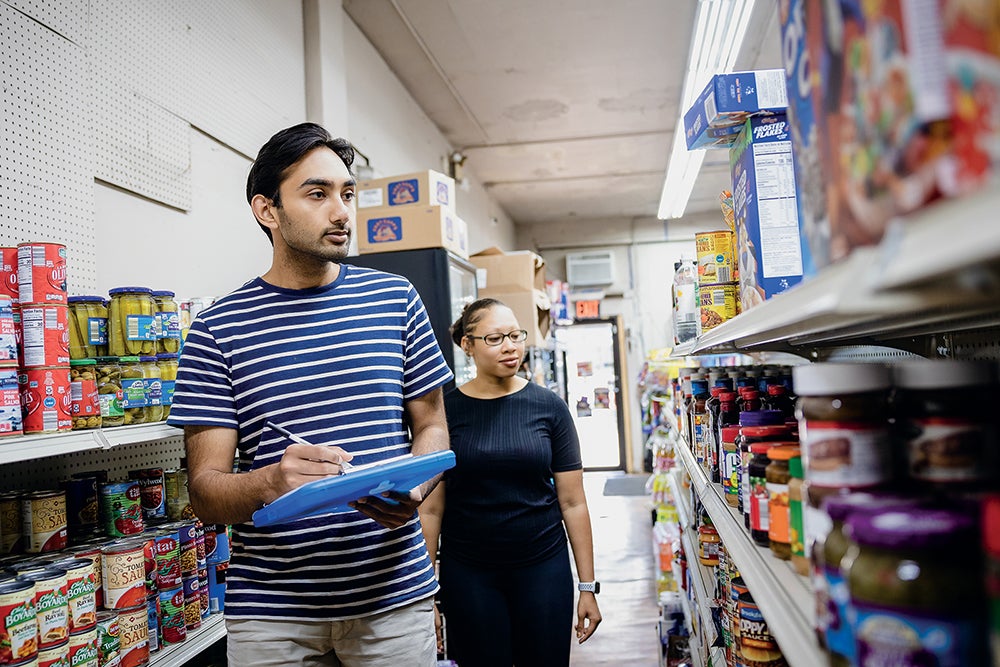features
Supporting Cleveland's Health
 Photo: Matt ShifflerCase Western Reserve graduate student Shubho Das said traveling across Cleveland to help conduct the food and tobacco survey this summer made him ''more aware of the issues that these communities have, and how we can address them.'' He visited stores one summer day with Juliana Hale, a Cleveland State University undergraduate.
Photo: Matt ShifflerCase Western Reserve graduate student Shubho Das said traveling across Cleveland to help conduct the food and tobacco survey this summer made him ''more aware of the issues that these communities have, and how we can address them.'' He visited stores one summer day with Juliana Hale, a Cleveland State University undergraduate.This past summer, a team of student interns from the CWRU School of Medicine’s Prevention Research Center for Healthy Neighborhoods crisscrossed Cleveland to identify what could be found on grocery shelves, from cigarettes and potato chips to milk and fresh vegetables.
The effort was part of a decade-long food and tobacco survey conducted annually and led by university faculty. It has become a vital resource not only for researchers studying the city’s structural inequities, but also for policymakers seeking solutions.
For example, data documenting the presence of stores selling cigarettes, cigarillos, or little cigars within a half-mile radius of 98% of city schools was instrumental in helping pass Cleveland legislation that raised the legal age required to purchase tobacco products from 18 to 21.
Now, details of the survey are available to the wider community through Freshfinder, an online map displaying fresh-food availability, local bus routes and shops that accept federal nutrition assistance programs.
The interactive map is also part of Nourishing Beginnings, a recently launched multi-organization pilot program to support low-income pregnant women in efforts to maintain better nutrition and health. It’s also providing social workers like Christine Lattiemore with a powerful new tool.
“It helps me find stores near where my clients live or work—some that I’ve never heard of—and specific foods that work for their needs,” said Lattiemore, a community health worker with the United Way of Greater Cleveland.
That’s the purpose of Freshfinder, to serve as a resource while building broader awareness about limited neighborhood food options, said Elaine Borawski, PhD (GRS ’89, ’92, sociology), the Angela Bowen Williamson Professor of Community Nutrition, who led development of both the map and the block-by-block food survey.
“There are many people who rely on these small grocers and corner stores for their basic food staples,” she said. “Freshfinder helps health professionals be more aware of the challenges their patients or clients are facing when trying to adopt healthier diets.”





